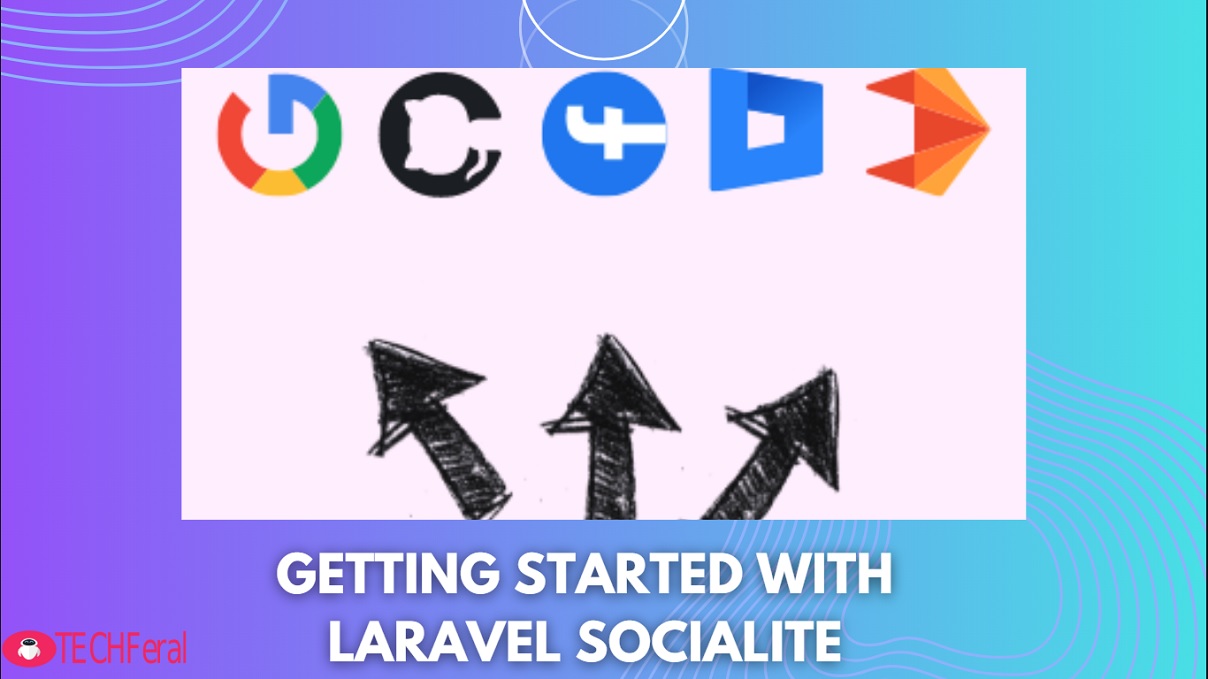
Last updated on : April 15th, 2025 by R Yadav
In the current digital landscape, social authentication has become a pivotal feature for many web applications which offers a seamless solution for integrating this capability into your projects. With Socialite, developers are empowered to implement social sign-in functionalities using various platforms such as Twitter, Facebook, LinkedIn, and Google. Socialite's simplicity combine to provide a smooth authentication process both for developers and users. In this article, we'll explore the key steps to get started.
Socialite serves as an official package that handles OAuth authentication with various social media platforms. By wrapping the complexities of OAuth in a simple, fluent API, Socialite greatly simplifies the task of implementing social logins in your application. This not only enhances the user experience by streamlining the sign-in process, but it also augments security by leveraging the authentication mechanisms of established platforms.
To understand Socialite's role in your project, consider its position as the intermediary between your application and social networks' authentication servers. When a user opts to log in via a social network, Socialite communicates with the relevant OAuth server, requests the necessary authentication details, and handles the intricacies of the token exchange process. The beauty of Socialite lies in abstracting these steps, so you don't get bogged down in protocol specifics.
Adopting Socialite in your projects not only provides a better sign-in experience but also aids in gathering user information securely. Moreover, beyond the pre-packaged drivers for the most popular services, Socialite allows for the integration of additional platforms through the use of custom drivers. By defining your own Socialite custom provider, the versatility of your application improves, allowing you to tailor the user authentication experience to your specific needs and the preferences of your target audience.
Getting started with Socialite involves a straightforward installation process. By requiring the package through Composer, you integrate Socialite into your project. Following this step, you will need to add Socialite's service provider to your application's config/app.php file. Thanks to auto-discovery feature, this can sometimes be automatically handled for you.
As for configuration, you must specify the credentials for the social platforms you intend to use—these include the client ID, client secret, and the callback URL. These details are generally stored in the config/services.php file, which allows to securely access these credentials without exposing them within your codebase. This decouples sensitive information from your code, allowing for better security practices and easier management per environment.
The next step is to create routes and controllers that will manage the social authentication process. Here, you'll write the logic for redirecting to the social provider and handling the callback. Socialite simplifies these routes considerably, often reducing them to just a few lines of code. It's all about mapping the user's intent to the correct controller actions.
Integrating Socialite with well-known social platforms requires registration with each service you wish to use. As part of this process, you'll create a new application on the platform's developer console and configure the necessary details such as scopes, permissions, and redirect URLs. The information you receive upon registration—commonly the client ID and secret—will be inserted into your configuration.
Each social platform has its own set of requirements and steps for creating a new OAuth application. For example, Facebook requires a thorough review of your application before granting full access to its OAuth services. Google, on the other hand, offers more straightforward access but still requires a configuration profile to be set up through their developer's console.
For seasoned developers, leveraging the advanced capabilities of Socialite can lead to a more refined and engaging user experience. Beyond the typical OAuth flow, Socialite can be extended with custom features such as conditional scopes, stateless authentification, and integrating additional social networks that aren't supported out of the box.
Customizing scopes based on dynamic conditions allows your application to ask for more permissions as a user engages with your application’s features, rather than requesting extensive access upfront. This dynamic scope management can increase user trust by showing that you respect their privacy and only access what's necessary.
Stateless authentification is an advanced feature that is particularly useful for API-driven or single-page applications that might make repeated calls. With Socialite, this feature can be easily implemented to ensure that users aren't burdened by repeated logins, thereby maintaining a frictionless user experience.
Altogether, Socialite equips developers with a streamlined solution for implementing social authentication within their web applications. Its easy setup, versatility, and the customizable nature make it an ideal choice for both novice and experienced developers aiming for a secure and user-friendly login process.
Read Next: Resources for Business Leaders: Becoming a Supply Chain Management Champion